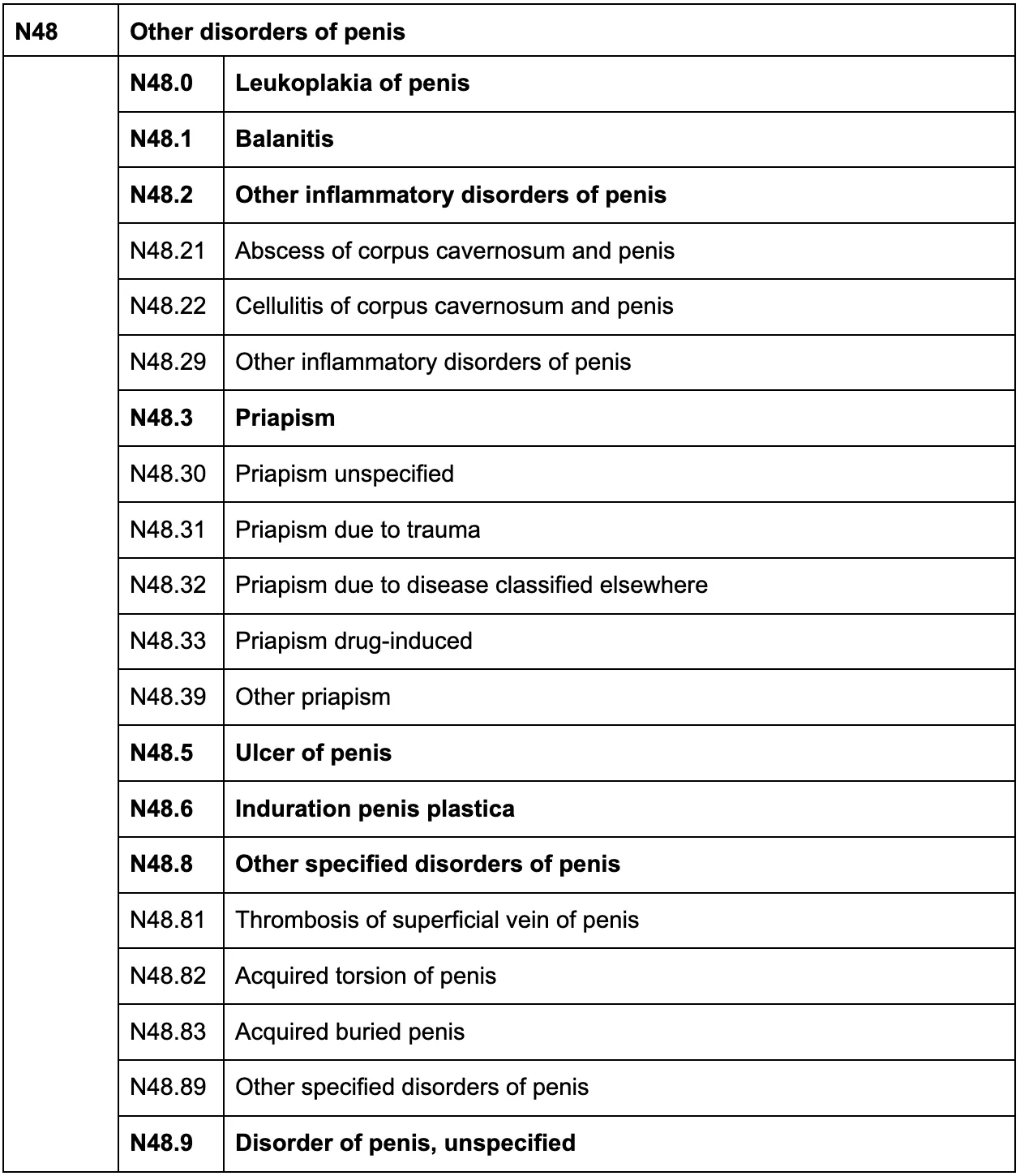Your session is about to expire
Peyronie's Disease ICD 10 Code
Refresher: What are ICD-10 codes?
ICD-10, or the International Classification of Diseases, is the 10th revision of the coding system used to classify diseases, symptoms, procedures, etc. This standardized system classifies medical conditions and helps with diagnoses of various conditions through medical codes.
These codes contain information about the following:
- Signs and symptoms of a disease
- Injuries
- External causes of diseases and injuries,
- Abnormal findings
- Related health problems
The US version of these codes was prepared by the Medicare & Medicaid Services and National Center for Health Statistics. These codes are further divided into two sets/categories:
- CM – Clinical modification
- PCS – Procedure coding system
CM helps with the diagnosis of diseases, whereas PCS is used for in-patient coding procedures [1]. Using this detailed coding system has enabled medical providers to receive reimbursement for certain services after submitting ICD-10-CM codes to the payer.
When these codes help diagnose a patient’s condition, they also serve as a justification for all the services they get as medically necessary.
What is the ICD-10 Code for Peyronie's disease?
The ICD-10 code for induration penis plastica or Peyronie's disease is N48.6. The code N48.6 falls under "Other disorders of penis," represented by N48 [2].
Peyronie’s disease involves the hardening of the penis due to the formation of plaque under the skin of the penis. The plaque keeps building up inside the penis, eventually pulling on the surrounding tissues and causing the penis to bend or curve. When the penis is curved or bent during an erection, sexual intercourse can become difficult and painful.
The table below lists the subcategories of “Other disorders of penis” represented by N48 with Peyronie's disease under N48.6.
- Peyronie’s disease ICD-10 code: N48.6
- Peyronie’s disease ICD code N48.6 Lookup
There are no subcategories of Peyronie's disease under N48.6 as it is a subcategory itself. Hence, below is a table of the ICD-10 “Other disorders of penis” codes with Peyronie's disease/induration penis plastica under N48.6 [3].
N48: Other disorders of penis

Types of Peyronie’s Disease Under N48.6
ICD-10 code N48.6 represents Peyronie's disease, but there are no subcategories represented by additional codes under it. The disease itself is part of “Other disorders of penis," represented by N48.
Peyronie’s disease does not have any types, but it has two stages:
- Acute
- Chronic
The former lasts for a maximum of 12 months. But, in the latter, the scar stops growing.
Types of Peyronie’s Disease Excluded from ICD-10 N48.6
The code ICD-10 N48.6 represents Peyronie's disease as an independent disease under “other disorders of penis.” Since it is a rare disease, there are no additional codes included in or excluded from N48.6.
Conclusion
Diagnosing Peyronie's disease can be complicated, mainly because it's a rare malady. For many people, it is nothing more than a "painful erection."
The pathophysiology of this disease is still unclear. However, leaving it untreated can cause problems with sexual satisfaction, penile pain and stress, and anxiety in the long run.
Early diagnosis and treatment are necessary because the disease hardly ever goes away on its own. This is where assigning the right code becomes imperative because the thickening of the penis skin is also a feature of "penis ulcer."
However, the latter is a result of sexually transmitted diseases, whereas Peyronie's disease can be a result of repeated injury to the penis. Determining the right ICD-10 code is the best way to create a treatment plan and implement it immediately.
ICD-10 codes for other disorders of penis can help doctors reach the right diagnostic conclusion and provide the best care to patients with the disease.